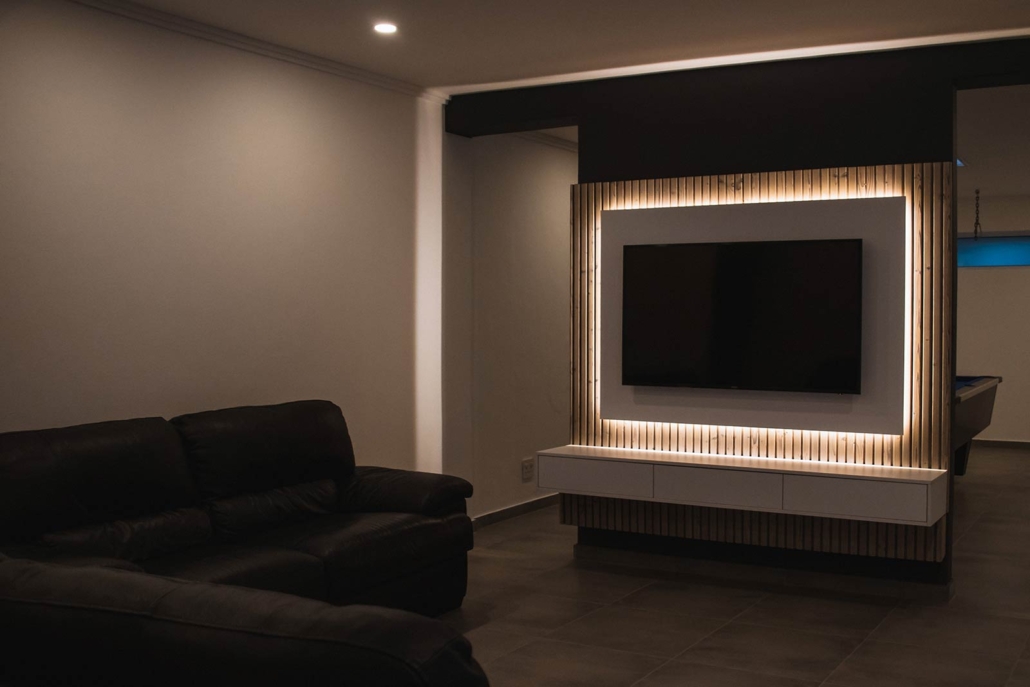Transforming your living room or dedicated space into a state-of-the-art home theatre can provide endless entertainment for you, your family, and friends. But to get the most out of your investment and create the ultimate cinematic experience, you need to pay attention to the details during the home theatre installation process. Here are some tips and tricks to help you elevate your home theatre setup in Melbourne.
Plan Your Space Wisely
Carefully consider the layout of your room to optimise the viewing experience. Take into account the size of the screen, the number of seats, and the distance between the seating and the screen. Ensure there’s enough space for comfortable seating, optimal speaker placement, and room for any additional equipment like gaming consoles or Blu-ray players.
Choose the Right Screen Size and Resolution
Selecting the right screen size and resolution is crucial for an immersive viewing experience. Consider your room size, seating arrangement, and the type of content you’ll be watching. Generally, larger screens with higher resolutions, such as 4K or 8K, offer a better cinematic experience. However, make sure not to go too big, as it could result in an uncomfortable viewing angle and strain on the eyes.
Invest in High-Quality Audio Equipment
A home theatre isn’t complete without an exceptional audio system. Invest in high-quality speakers and amplifiers that can deliver clear, powerful sound, and create an immersive audio experience. A well-rounded audio setup should include a combination of floor-standing, bookshelf, and in-wall speakers, as well as a subwoofer for deep bass.
Soundproof Your Room if Possible
Soundproofing can significantly enhance your home theatre experience by minimising external noise and preventing sound from leaking to other parts of your home. Install acoustic panels, insulation, and weatherstripping to improve sound quality and keep distractions to a minimum.
Opt for the Right Seating
Comfortable seating is a must for a cozy and enjoyable movie night. Choose seating options that offer support, comfort, and style. Consider options like reclining chairs, sofas, or sectional seating, and don’t forget to add some plush cushions and cozy blankets.
Pay Attention to Lighting
Proper lighting can set the mood for your home theatre and prevent glare on your screen. Opt for dimmable lighting or LED strips, and consider installing blackout curtains or blinds to block out any external light during daytime viewings.
Don’t Skimp on Cabling
High-quality cables and proper cable management can make a noticeable difference in your home theatre’s performance. Invest in high-speed HDMI cables and speaker wires that can deliver the best possible audio and video signals, and keep your cables organised to avoid a messy, tangled setup.
Consider Smart Home Integration
Integrating your home theatre with a smart home automation system can add convenience and control at your fingertips. Control your lighting, audio, and video components with a single remote or your smartphone, creating a seamless, user-friendly experience.
By following these tips and tricks, you can create an elevated home theatre experience that will make movie nights and binge-watching sessions even more enjoyable.
Watch: Remastering the Home Cinema Experience with Bang & Olufsen
Credit: Bang & Olufsen
Frequently Asked Questions About Home Theatre Installation in Melbourne
Home theatre installations can transform your entertainment experience, bringing the magic of the cinema into your living space. However, it’s natural to have questions about the process and components involved. In this article, we’ll answer ten frequently asked questions around home theatre installation to help you create the ultimate viewing experience.
What is the ideal room size for a home theatre installation?
The ideal room size for a home theatre installation depends on your preferences and available space. Generally, a larger room allows for better seating, screen size, and speaker placement options. Consider a room that’s spacious enough to accommodate your desired seating arrangement and components while still allowing for proper soundproofing and acoustics.
How far should the seating be from the screen for optimal viewing?
Seating distance depends on the screen size and resolution. A good rule of thumb is to sit 1.5 to 2.5 times the diagonal screen size away for a comfortable and immersive viewing experience. Be sure to consider the specific requirements of your screen and the viewing angles of your seats.
What is the best type of screen for a home theatre: projector or flat-panel TV?
The choice between a projector or flat-panel TV depends on your room size, lighting conditions, and personal preferences. Projectors offer a larger screen size and a cinematic feel, while flat-panel TVs are more versatile and work well in brighter rooms. Evaluate your space and requirements to determine the best option for your home theatre.
How many speakers are needed for a surround sound setup, and where should they be placed?
A popular choice for home theatres is a 5.1 surround sound setup with five speakers (left, right, centre, and two rear) and a subwoofer. For a more immersive experience, consider a 7.1 or Dolby Atmos setup. Proper speaker placement is essential for optimal sound quality, so consult an expert or follow manufacturer guidelines for best results.
How can I soundproof my home theatre room to minimise noise disturbance?
Soundproofing your home theatre room can enhance acoustics and minimise noise disturbance. Consider adding insulation, using acoustic panels, sealing gaps, and installing solid-core doors. Professional soundproofing solutions can also be an effective way to improve your home theatre experience.
What is the best type of seating for a home theatre, and how many seats should I plan for?
The best type of seating for a home theatre is comfortable, supportive, and suits your personal style. Options include recliners, sofas, or even tiered seating. Plan for enough seats to accommodate your family and any guests you may have, keeping in mind the available space and viewing angles.
How important is lighting in a home theatre, and what kind of lighting should I choose?
Lighting plays a crucial role in creating the right atmosphere in a home theatre. Opt for dimmable lights, LED strip lighting, or smart lighting systems that allow for customizable settings. Proper lighting can enhance the overall experience and provide a comfortable environment for viewing.
Should I invest in a universal remote or a smart home system to control my home theatre components?
Both universal remotes and smart home systems can simplify the control of your home theatre components. Universal remotes consolidate multiple remotes into one, while smart home systems offer seamless integration and voice control. Evaluate your needs and preferences to choose the best option for your home theatre.
What kind of cables should I use for my home theatre system, and how can I manage them effectively?
High-quality HDMI, speaker, and optical audio cables are recommended for your home theatre system. For cable management, consider cable sleeves, conduits, or in-wall installations to keep your space neat and organised. Proper cable selection and
Get Professional Help For Your Home Theatre Installation
Enlisting the help of professionals, like the team at Archon Electrical Services, can save you time, effort, and potential mistakes during the installation process. Our expert team of licensed Melbourne electricians can ensure the proper placement of speakers, screen, and other components, as well as optimise your system’s performance.
So, if you need assistance with your home theatre installation in Melbourne, don’t hesitate to contact us. We’re here to help you bring your entertainment dreams to life!



